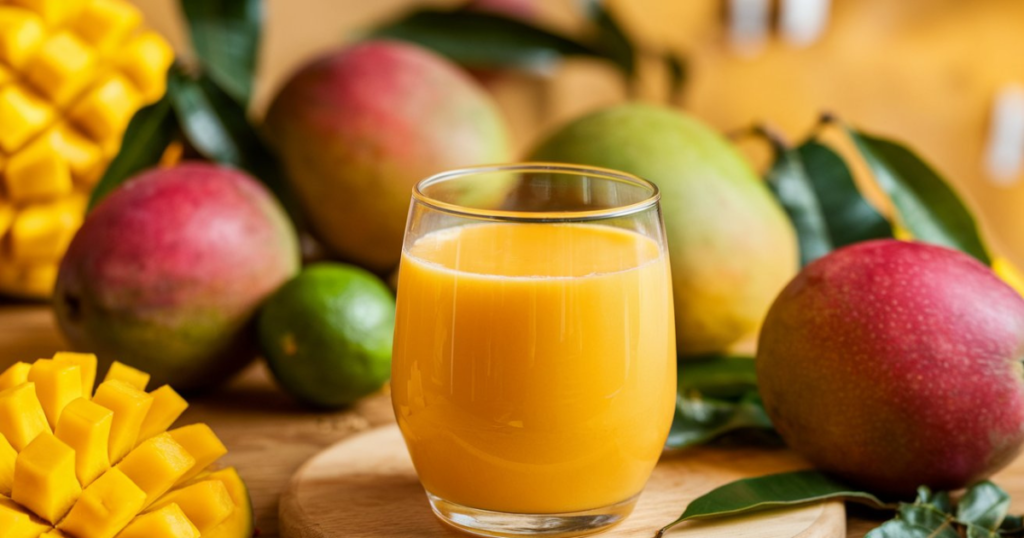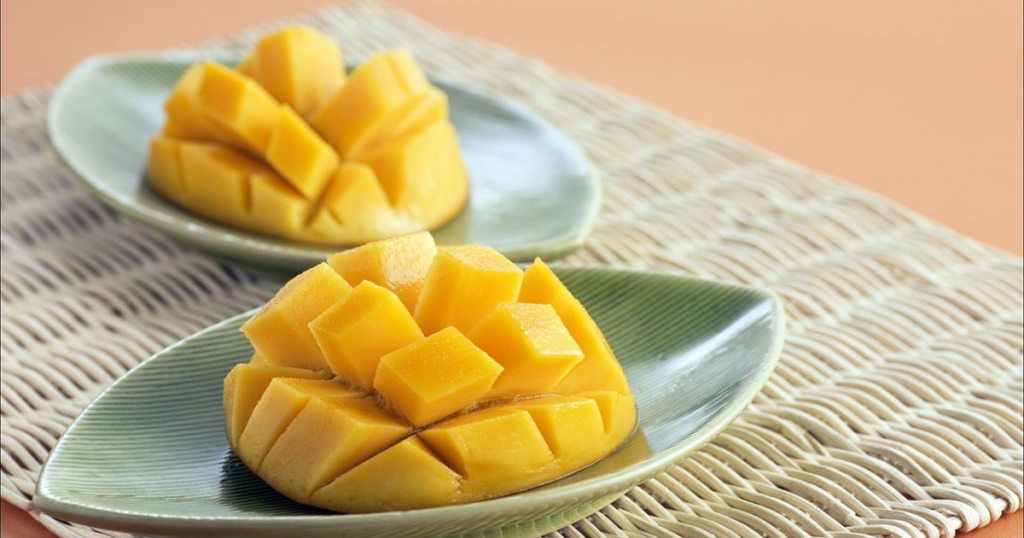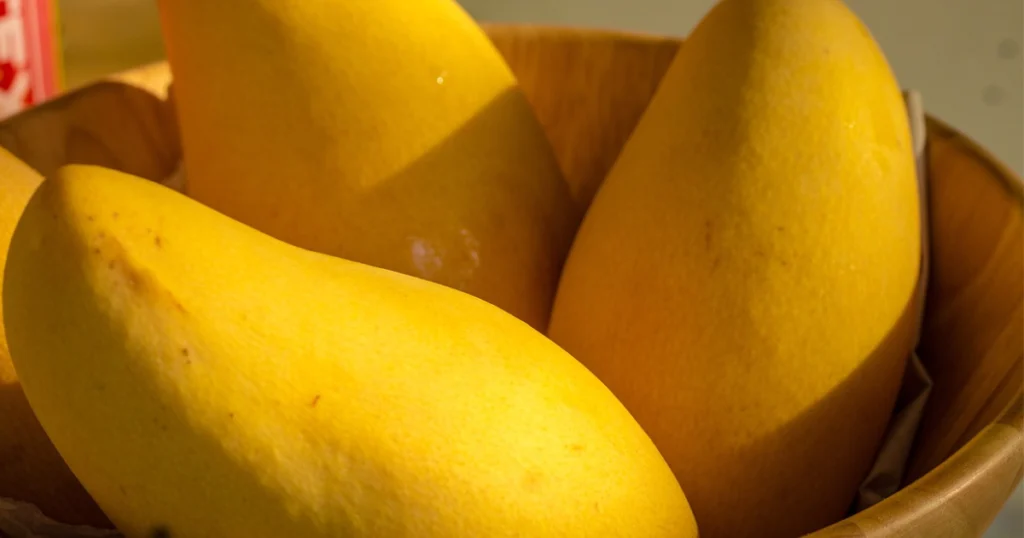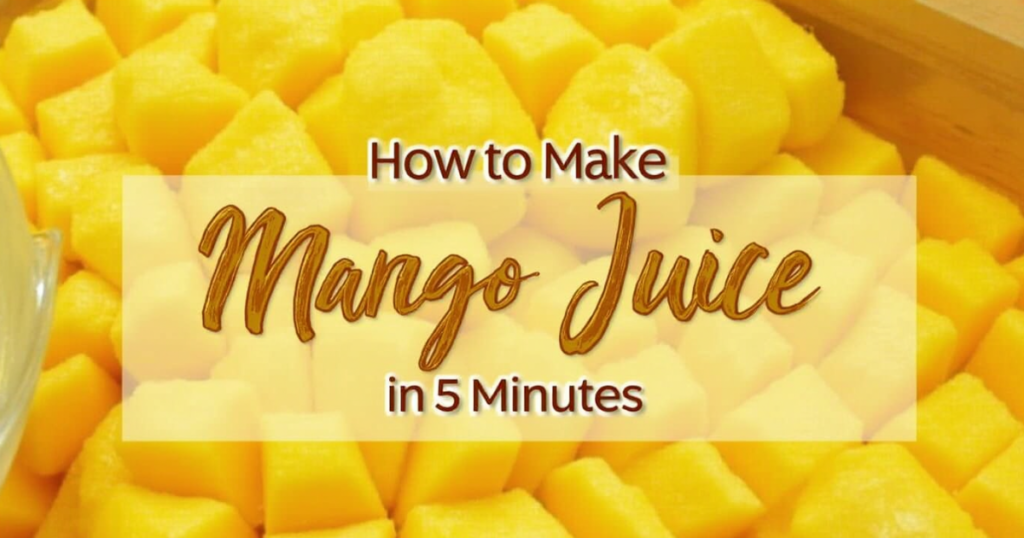Craving a tropical refreshment that tantalizes your taste buds and invigorates your senses? Discover the art of crafting mango fruit juice in just five minutes—a delightful fusion of flavor and simplicity. With minimal ingredients and effort, you can transform ripe mangoes into a luscious beverage that not only satisfies your palate but also enriches your body with essential nutrients. Elevate your culinary repertoire with this quick and delectable juice recipe. Embrace the ease and pleasure of creating your own mango and juice masterpiece today.
Why Mango Juice is a Popular Refreshing Drink
Mango juice reigns supreme as a beloved summer beverage worldwide. Its vibrant hue mirrors the tropical sunshine it embodies. The luscious sweetness of ripe mangoes, bursting with natural sugars, provides an instant energy boost. Mango juice is a refreshing elixir, quenching thirst effectively while delivering a delightful burst of flavor. Its versatility shines through – enjoyed chilled, blended into smoothies, or even used as a base for cocktails. Moreover, the abundance of vitamins, minerals, and antioxidants makes mango juice a guilt-free indulgence that nourishes the body.

Benefits of Making Mango Juice at Home
Homemade mango juice offers unparalleled freshness and flavor. By preparing it yourself, you can control the ingredients, ensuring a healthier drink free from preservatives and artificial flavors. It’s also a cost-effective alternative to store-bought options and allows you to experiment with flavors to suit your palate. Plus, making your own mango juice is an environmentally friendly choice, reducing packaging waste.
Essential Ingredients for Mango Juice
The foundation of exceptional mango juice lies in the quality of its star ingredient: the mango itself. Choose ripe mangoes, characterized by a vibrant yellow-orange hue and a slight give when gently pressed. Overripe mangoes may be too soft, while underripe ones will lack sweetness. While these are the core ingredients, you can customize your juice with additions like lime or lemon juice for a tangy twist, or a touch of honey for added sweetness.
Primary Ingredient:
- Ripe Mangoes: The star of the show! Choose mangoes that are slightly soft to the touch and give off a sweet aroma.
Optional Additions (for flavor and sweetness):
- Water: Used to blend the mangoes into a smooth juice.
- Sugar: Adjust to taste, or omit if the mangoes are very sweet.
- Honey: A natural sweetener that adds a touch of sweetness and a subtle floral flavor.
- Lime or Lemon Juice: Provides a tangy and refreshing counterpoint to the sweetness of the mangoes.
Optional Additions (for extra flavor):
- Ginger: A small piece of grated ginger adds a spicy kick.
- Mint: A few fresh mint leaves provide a cooling and aromatic touch.
- Coconut Water: Adds a tropical twist and enhances the hydrating qualities of the juice.
Selecting the Best Mangoes for Juice
The foundation of any great mango juice lies in the mangoes themselves. Opt for ripe, juicy varieties such as Alphonso, Kent, or Ataulfo, which are renowned for their sweetness and minimal fibrous content. Look for mangoes with a slight give when gently pressed and a fragrant aroma at the stem end.

Other Key Ingredients for Flavor and Texture
While mangoes are the star of the show, other ingredients can elevate your juice. A splash of lemon or lime juice adds a tangy twist, while a pinch of salt balances the sweetness. For those who enjoy a richer texture, consider adding a small amount of coconut water or yogurt. Sweeteners like honey or agave syrup can be used sparingly if needed.
Tools and Equipment You’ll Need
Making mango juice at home requires minimal equipment. A sharp knife is essential for peeling and cutting the mangoes. A cutting board provides a stable surface for this task. Depending on your preferred method, you’ll either need a blender or a juicer. A fine-mesh sieve is optional but recommended for straining out any remaining pulp for a smoother consistency. Lastly, a pitcher or glasses are needed for serving your freshly made juice.
Must-Have Tools for Quick Preparation
A high-quality blender is essential for achieving a smooth consistency in minimal time. You’ll also need a sharp knife for peeling and chopping the mangoes, as well as a cutting board to keep your workspace tidy. Measuring cups and a strainer can also be handy for precision and removing pulp, respectively.
Optional Tools for Enhanced Convenience
If you’re looking to streamline the process, consider investing in a mango slicer for quicker prep. A citrus juicer can simplify the task of adding lemon or lime juice, while a frother can be used to create a light, frothy texture for a more gourmet presentation.
Step-by-Step Guide to Make Mango Juice in 5 Minutes
Creating delicious mango juice is a breeze. Begin by peeling and cutting the mangoes. If using a blender, simply add the mango chunks along with a small amount of water. Blend until smooth and creamy. Alternatively, use a juicer to extract the juice directly. Strain the juice through a sieve if desired. For an extra zing, add a squeeze of lime or lemon juice. Serve immediately, garnished with a mango slice or mint sprig.
Preparing Mangoes for Juicing
Begin by washing the mangoes thoroughly to remove any dirt or residues. Peel the mangoes using a knife or peeler, and slice the flesh away from the pit. Cut the mango flesh into smaller chunks to make blending easier.

Blending Ingredients for a Smooth Consistency
Place the mango chunks in a blender along with a small amount of water or coconut water. Blend on high speed until the mixture is smooth and creamy. For added flavor, incorporate a splash of lime juice and a pinch of salt. Strain the juice through a fine-mesh sieve if you prefer a pulp-free drink.
Tips for Perfect Mango Juice Every Time
To ensure consistently perfect mango juice, select ripe, high-quality mangoes. Overripe mangoes can make the juice overly sweet and slightly mushy. Underripe mangoes will lack sweetness and may have a slightly tart flavor. Consider chilling the mangoes before juicing for a more refreshing experience. If using a blender, add water gradually to achieve your desired consistency. Experiment with different additions like ginger, mint, or coconut water to discover your favorite flavor combinations.
How to Adjust Sweetness and Tartness
Taste the juice before serving and adjust as needed. If it’s too sweet, a few drops of lemon juice can balance the flavor. Conversely, if it’s too tart, a drizzle of honey or a sprinkle of sugar can enhance the sweetness.
Ensuring the Right Thickness and Texture
For a thicker juice, reduce the amount of water used during blending. If you prefer a lighter drink, add more liquid until you reach the desired consistency. Always blend thoroughly to ensure a silky texture.
Creative Additions to Enhance Your Mango Juice
Elevate your mango juice beyond the ordinary with a few creative additions. A squeeze of lime or lemon juice adds a bright, tangy note that complements the sweetness of the mangoes. A pinch of chili powder introduces a subtle heat that awakens the senses. A spoonful of honey adds a touch of sweetness and creates a more balanced flavor profile. For a tropical twist, incorporate a splash of coconut water or a few drops of coconut extract.
Adding Herbs and Spices for Unique Flavors
Fresh herbs like mint or basil can add a refreshing twist to your mango juice. For a spiced version, try a pinch of cinnamon or cardamom, which complement the natural sweetness of mangoes beautifully.
Mixing Mango Juice with Other Fruits
Experiment with blending mango juice with other fruit juices such as orange, pineapple, or passion fruit for a tropical medley. You can also add a handful of berries for a burst of color and flavor.
Health Benefits of Fresh Mango Juice
Mango juice is not only delicious but also a nutritional powerhouse. It’s an excellent source of vitamin C, a potent antioxidant that boosts immunity and promotes collagen production. Mangoes are also rich in vitamin A, essential for maintaining healthy vision and skin. The presence of potassium helps regulate blood pressure, while dietary fiber aids in digestion.
Nutritional Value of Mango Juice
Mango juice is a powerhouse of essential nutrients, including vitamins A, C, and E, which support immunity and skin health. It’s also rich in dietary fiber and antioxidants, making it a wholesome choice for overall well-being.
How Mango Juice Supports Hydration and Wellness
With its high water content, mango juice is an excellent way to stay hydrated. Its natural sugars provide a quick energy boost, while its potassium content helps maintain electrolyte balance. Regular consumption can also aid digestion and promote healthy skin.
Common Mistakes to Avoid
One common mistake is using underripe or overripe mangoes. Underripe mangoes will result in a tart, unpalatable juice, while overripe mangoes can make the juice too sweet and mushy. Another mistake is blending for too long, which can cause the juice to become overly frothy. Lastly, neglecting to strain the juice can leave it with a pulpy texture, which some may find unappealing.
Overlooking Mango Quality
Using underripe or overripe mangoes can significantly affect the flavor and texture of your juice. Always choose mangoes that are at their peak ripeness for the best results.
Adding Too Much Water or Sweeteners
Excessive water can dilute the flavor, while too much sweetener can overpower the natural taste of mangoes. Aim for a balanced approach to let the mangoes shine.
Storing and Serving Mango Juice
Freshly made mango juice is best enjoyed immediately for optimal flavor and freshness. However, if you have leftovers, store them in an airtight container in the refrigerator for up to 24 hours. Before serving, give the juice a gentle stir to ensure even distribution of flavors. Serve chilled in glasses, garnished with a slice of mango or a sprig of mint. Enjoy!
Best Practices for Storing Fresh Juice
Fresh mango juice is best enjoyed immediately, but it can be stored in an airtight container in the refrigerator for up to 24 hours. To prevent oxidation, consider adding a few drops of lemon juice before storing.
Creative Ways to Serve Mango Juice
Serve mango juice chilled in a tall glass with a garnish of mint leaves or a slice of lime. For a festive touch, rim the glass with sugar or salt and serve with a colorful straw.
Conclusion
Encouragement to Try Making Mango Juice at Home
Making mango juice at home is a simple yet rewarding experience. With just a few ingredients and minimal effort, you can enjoy a drink that’s both delicious and nutritious.
Start by selecting ripe, succulent mangoes. Their sweetness will translate directly into the flavor of your juice. Peel the mangoes and remove the pit. You can then proceed in two ways:
- Manual Method: Cut the mango flesh into chunks and place them in a blender. Add a touch of water and blend until smooth.
- Quick Method: Use a juicer to extract the juice directly from the mango flesh. This method is faster and may result in a smoother consistency.
Strain the juice through a fine-mesh sieve to remove any remaining pulp. This step is optional, but it will produce a clearer, more refined juice.
For an extra touch, add a squeeze of lime or lemon juice. This not only enhances the flavor but also provides a refreshing acidity that balances the sweetness of the mangoes.
Serve your homemade mango juice immediately. Garnish with a slice of fresh mango or a sprig of mint for an elegant presentation.
Final Thoughts on Enjoying Fresh, Homemade Mango Juice
Fresh mango juice is a celebration of tropical flavors and health benefits. Embrace the joy of crafting your own and savor the vibrant taste of summer in every sip.
Encouragement to Try Making Mango Juice at Home
Don’t be intimidated by the process. Making mango juice at home is incredibly easy and far more rewarding than purchasing store-bought varieties.
